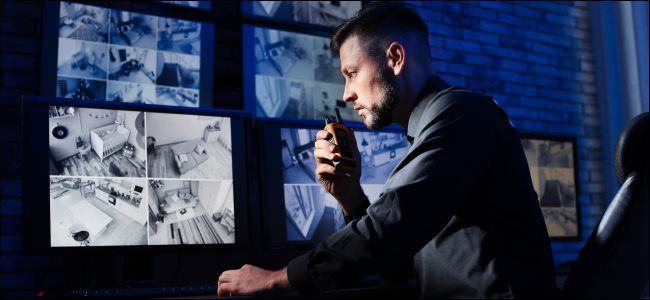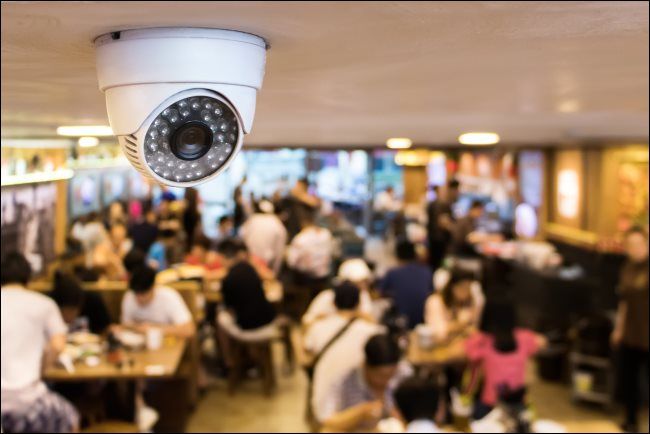Quick Links
Two cops stand at a computer. Before them is a blurry security camera image. “Enhance,” barks the senior officer to the rookie, who presses a few buttons. Suddenly, the image transforms, revealing a critical piece of evidence. But is "enhancing" video footage realistic?
Separating Fact from Fiction
Technology always plays a role in TV narrative-spinning, and this is one of the most endemic tropes, appearing everywhere from CSI to Star Trek.
Predictably, fiction is always a lot more exciting than fact. Ultimately, pictures are information, with each pixel representing a singular piece of datum. While it’s possible to forensically adjust images to make certain elements clearer, you can’t extract something from nothing. The success of any forensic image analysis, therefore, depends on a multitude of factors, including the quality of the camera and the conditions in which the footage was taken.
Suppose a convenience store has an old-school VGA security camera bought by the owners in the mid-2000s, and someone breaks in. As the thief flees, his mask slips, and his face is visible for just a moment. Seconds later, he’s in the getaway car, far from the camera’s field of vision.
Let’s suppose, for that moment, the suspect’s face occupied an area of the still 50 pixels in height and 25 pixels in width for a total of 1,250 pixels. That’s not a lot of space---and most of the distinguishing features that would allow a jury to positively confirm the identity of the suspect (tattoos, facial structure, scars, etc.) are vague and undefined.
Remember, pixels are data. If that data isn’t there, you can’t conjure it out of nowhere. You can’t somehow process a grainy thumbnail-shaped bit of imagery into an high-resolution masterpiece, bringing to light the various minuscule blemishes that ultimately form part of a person’s identity. It just can’t be done.
How "Enhancing" Footage Actually Works
That notwithstanding, enhancements can be made to an image that may ultimately assist with an investigation. If you’re a photographer or videographer, you might be familiar with some of them.
Let’s suppose law enforcement has some CCTV footage taken at a point when a crime was committed. However, at the time of the incident, it was night, making it almost impossible for anyone to distinguish any useful details.
A qualified forensic image analysis professional may then take a still and open it within Photoshop---or another relevant tool, like Lightroom or DarkTable---and adjust the contrast or histogram levels to reveal important clues. This is, effectively, basic image editing.
But there’s an important distinction to make here. For a long time, image analysis was (for want of a better phrase) something of a Wild West, with little oversight or regulation. That has since changed, and those that perform forensic image analysis within the context of an investigation have to adhere to a code of conduct.
First, for their evidence to be regarded as admissible, many jurisdictions (including the United Kingdom) require the analyst to be proven competent. They have to know what they’re doing and be able to prove it. They also have to stick to their area of expertise. An image analyst may not be an expert on facial comparison or human anatomy, and therefore shouldn’t offer comment on those elements.
Second, forensic image analysts have to adhere to the usual rules of engagement. This includes retaining the original image---and, where possible, the original storage device. They must also document the entire process so that a third party can trace their steps and recreate the same results.
Ultimately, these rules don’t focus on the actual technical process, but rather ensure that any evidence obtained is admissible in a court of law.
Zooming in on the Bigger Picture
Reality is less exciting than fiction. But, just like with tracing a phone call, there’s a grain of truth here.
The “zoom and enhance” trope derives from a period in time when most security cameras were, bluntly, terrible. And, that presented a challenge for investigators, first in finding their suspect, but also in trying them in a court of law. Research from academics at Robert Gordon University shows that juries are often less willing to convict on low-quality CCTV footage because, if they’re wrong, they’ve ruined an innocent person’s life.
You have to be sure. And, you can’t be sure with a cheap security camera.
Obviously, 2020 is different. You can now buy an HD security camera for less than the cost of dinner at a restaurant. The Wyze Cam is perhaps the best example. It retails at $20 and comes with a 1080p sensor and night vision. Yi offers a similarly configured camera in the same ballpark.
With that comes less need to “zoom and enhance.” Instead, the conversation around image analysis has shifted towards tasks like light adjustment and ensuring photos are kept and transformed in a way that meets forensic standards.
Try as we might, we just can’t imagine the writers of CSI doing an episode about a forensic image analyst completing their chain-of-custody paperwork.


